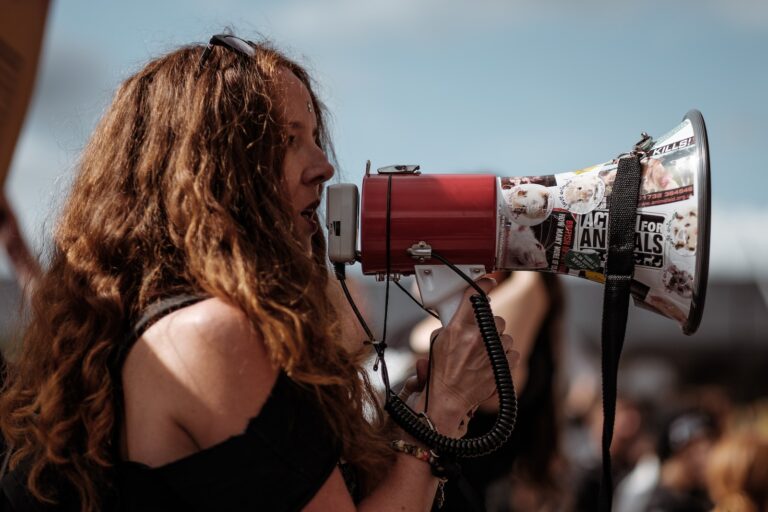The Importance of Expressing Feelings and Intentions to Friends
Friendship is a two-way street. It takes effort, communication, and trust to maintain healthy relationships with those we care about. While expressing our thoughts and feelings can be difficult at times, it is important to understand how our words can impact our relationships.
Bottling up emotions or holding back intentions can lead to misunderstandings, resentment, or even the end of a friendship. Therefore, it is crucial to learn techniques for effective communication that can help us express ourselves in a constructive manner.
Expressing your feelings openly and honestly can strengthen your friendships by creating an environment of trust and understanding. Honest communication also helps prevent assumptions or misinterpretations that could damage the relationship.
It creates space for growth where both parties feel heard and validated. Not only does this type of communication make it easier for others to appreciate you as an individual but also as a friend who trusts them enough with their vulnerability.
Overview of Techniques for Effective Communication
There are various techniques we can use when communicating with friends in order to improve our ability to express ourselves clearly and effectively. Some techniques include active listening, using “I” statements, practicing empathy validation, conflict resolution techniques among others. Active listening involves fully engaging in conversations by paying attention not only to what is said but also nonverbal cues such as body language and tone of voice.
Using “I” statements focuses on expressing your feelings without blaming or accusing others while providing specific examples that reinforce your point without attacking someone else’s character. Practicing empathy involves putting yourself in someone else’s shoes while validating their emotions even if you don’t agree with them while conflict resolution involves finding common ground through brainstorming solutions together rather than defending one’s position against the other person’s views.
Nonviolent communication techniques such as observation, feelings, needs and requests help you avoid miscommunications that often lead to disagreements and damaged relationships. By understanding the importance of expressing our feelings and intentions in friendships and learning effective communication techniques we can improve our relationships with those individuals who are closest to us.
Understanding Your Own Feelings and Intentions
Self-Reflection and Introspection
Before you can effectively communicate your emotions and intentions to your friend, it’s important to understand them yourself. This begins with self-reflection and introspection. Take time to review your thoughts and feelings about the situation at hand.
Ask yourself questions like “Why am I feeling this way?” or “What are my goals in this situation?”. During introspection, it’s important to be honest with yourself without being too critical or judgmental.
Take a moment to acknowledge the emotions you’re experiencing without trying to suppress them or make excuses for them. This will help you gain more clarity on what exactly you’re feeling so that you can properly communicate it.
Identifying Specific Emotions and Goals
Once you’ve taken the time to reflect on your emotions, identify specific feelings that are driving your actions or reactions such as anger, sadness, jealousy or fear etc. Each emotion may require a different approach so identifying the specific emotions will help guide how best to express them. It’s also important at this stage of self-reflection that we identify our goals in this situation that has prompted us wanting our friend’s attention.
What is it we want from our friend? Is it support?
Understanding? Feedback?
Are we looking for resolution or just an ear? Identifying specific goals helps us better articulate what we want from our friend when communicating these feelings.
Writing Down Thoughts and Feelings
Writing down how we feel can be quite therapeutic as well as helpful in organizing thoughts before communicating with friends because it allows us the ability to process things at our own pace, reflect on what we have written and adjust accordingly before sharing with others. This also increases self-awareness by making connections between thoughts, behaviors and emotions more visible.
When writing down thoughts and feelings, be honest and thorough. Write down everything that comes to mind, no matter how trivial it may seem.
This can help increase emotional clarity and provide a better understanding of emotions you may have been unaware of. It can also help you identify patterns in your behavior or reactions which will aid in future communication efforts.
Active Listening: Paying attention to nonverbal cues
One of the most important elements of effective communication is active listening. When you’re speaking with your friend, it’s essential to pay attention not only to their words but also to their nonverbal cues. These can include facial expressions, body language, and tone of voice.
Nonverbal cues can provide a lot of insight into a person’s emotions and feelings, even if they don’t explicitly say what they’re thinking or feeling. For example, if your friend is telling you a story about something that happened at work and they seem tense or anxious, it’s possible that they’re really stressed out about the situation.
By paying attention to these nonverbal cues, you can pick up on their emotions and respond appropriately. You might ask questions to clarify what’s going on or offer empathy and support.
Active Listening: Asking clarifying questions
Another important aspect of active listening is asking clarifying questions when you’re unsure about something your friend has said. This can help prevent misunderstandings and ensure that you fully understand what your friend is trying to communicate. For example, let’s say your friend mentions that they had a fight with someone at work but doesn’t go into detail about what happened.
Rather than assuming you know what happened or brushing over the topic entirely, it might be helpful to ask some clarifying questions. You could ask things like “What specifically did this person do?” or “How did this make you feel?” These questions show that you’re actively engaged in the conversation and genuinely interested in understanding your friend’s perspective.
Active Listening: Paraphrasing and summarizing
When engaging in active listening with your friend, it can be helpful to paraphrase or summarize what they’ve said back to them. This technique confirms that you’ve understood them correctly and gives them an opportunity to correct any misunderstandings. For example, if your friend is telling you about a problem they’re having with their partner, you might say something like “It sounds like you’re feeling really frustrated with the way things are going right now.” This not only confirms that you’ve understood their emotions but also shows that you’re empathetic and supportive.
Active listening is a crucial component of effective communication with friends. By paying attention to nonverbal cues, asking clarifying questions, and summarizing what your friend has said back to them, you can ensure that your conversations are productive and meaningful.
Using “I” Statements
Expressing Feelings without Blaming or Accusing
When trying to express your feelings to a friend, it is important to avoid making accusations or placing blame. One effective way to do this is by using “I” statements.
These statements allow you to focus on your own experiences and emotions without placing responsibility on the other person. This can help create a safe space for open communication and prevent defensiveness.
For example, instead of saying “You always make me feel ignored,” try saying “I feel ignored when I don’t receive a response from you.” This not only focuses on your own feelings, but it also presents an opportunity for the other person to understand how their actions affect you. By using “I” statements, you can help keep the conversation constructive and respectful.
Focusing on Personal Experiences rather than Assumptions
It is easy to make assumptions about what someone else is feeling or thinking, but these assumptions may not always be accurate. When expressing your feelings and intentions to a friend, it is important to focus on your personal experiences rather than assuming what the other person is experiencing. For example, instead of assuming that your friend doesn’t care about your needs, try saying something like “When we hang out and you spend most of the time talking about yourself, I feel like my needs aren’t being heard.” This allows you to express how their behavior affects you without making assumptions about their intentions or feelings.
Providing Specific Examples
One way to effectively communicate with a friend is by providing specific examples of situations that have caused certain emotions or thoughts. This helps provide context for your feelings and can help the other person better understand where you are coming from. For example, instead of saying “You never listen,” try saying something like “Last week when I was telling you about my struggles at work, you interrupted me to talk about your weekend plans.” By providing specific examples, you can help the other person understand how their actions are affecting you and work together to find a solution.
Empathy and Validation:
Acknowledging the other person’s perspective
When we communicate with others, it is important to understand that each person has their own unique experiences and perspectives. One way to show respect for your friend’s thoughts and feelings is by acknowledging their perspective. This means actively listening to their point of view and demonstrating that you understand where they are coming from.
You can do this by nodding, using affirming language (such as “I can see how you might feel that way”), or repeating what they’ve said in your own words. Acknowledging another person’s perspective does not mean you have to agree with them.
In fact, recognizing differences in opinion can be a healthy part of any relationship. But by showing empathy and understanding, you are better able to build trust and strengthen your friendship.
Validating their emotions, even if you don’t agree with them
Another important aspect of empathy is validating your friend’s emotions. This means acknowledging the validity of their feelings, even if you don’t necessarily share those same emotions yourself.
For example, if your friend expresses feeling upset about a situation at work that doesn’t seem like a big deal to you, it may still be important for them. Validation can take many forms, such as saying “I’m sorry you’re feeling that way” or “That sounds really challenging.” It also involves avoiding dismissive or judgmental language like “You shouldn’t feel that way” or “It’s not a big deal.” By validating someone else’s emotions, we are showing them that we care about their well-being and want to support them.
Showing empathy by putting yourself in their shoes
One powerful way to demonstrate empathy is by putting yourself in someone else’s shoes. This means imagining what it might be like to experience the world from their perspective.
For example, if your friend has just experienced a loss, you might try to imagine how you would feel if you were in their position. This can help you better understand their emotions and react with greater compassion.
Showing empathy by putting yourself in someone else’s shoes is not always easy, especially when the other person is experiencing emotions that we don’t necessarily relate to. However, it can be a valuable skill for building deeper connections and fostering greater understanding in our relationships.
Conflict Resolution Techniques
Avoiding Defensiveness: Keeping the Conversation Open and Productive
Conflict is inevitable in any relationship, and navigating it can be tricky. One important technique for successfully resolving conflicts is to avoid defensiveness.
When we feel attacked or criticized, our instinct is often to go on the defensive, which can quickly escalate the conflict and damage the relationship further. To avoid defensiveness, it’s important to approach the conversation with an open mind and a willingness to listen.
Try not to take things personally or assume that the other person is attacking you. Instead, focus on understanding their perspective and finding common ground.
When responding, use “I” statements rather than “you” statements, which can come across as accusatory. For example, instead of saying “you never listen to me,” try saying “I feel like I’m not being heard.” This approach puts the focus on your feelings rather than blaming the other person.
Finding Common Ground: Building Bridges Instead of Walls
Finding common ground is an essential part of conflict resolution. By identifying shared interests or goals, you can begin to build a sense of teamwork and collaboration instead of opposition. To find common ground, start by acknowledging what you agree on.
Even if you have different opinions about certain aspects of a situation, there’s likely some area where your views align. Start there and work outward.
It’s also important to recognize that compromise may be necessary in order to reach a mutually beneficial solution. This doesn’t mean giving up your position entirely; rather, it means being willing to make concessions in order to move forward together.
Brainstorming Solutions Together: Collaborating for Success
Once you’ve found some common ground and established a sense of trust and mutual respect within the conversation, it’s time to start brainstorming solutions together. Encourage creativity and outside-the-box thinking, and be willing to consider ideas that may seem unconventional or unfamiliar. Remember that the goal is to find a solution that benefits everyone involved, not just one person’s interests.
It’s also important to establish clear criteria for evaluating potential solutions. What are the key factors that need to be considered?
What are the priorities? By establishing these criteria upfront, you can ensure that all solutions are evaluated fairly and objectively.
Conflict resolution requires a delicate balance of assertiveness, empathy, and collaboration. By avoiding defensiveness, finding common ground, and brainstorming solutions together, you can successfully navigate even the most challenging conflicts in communicating with friends.
Nonviolent Communication Techniques
Nonviolent Communication (NVC) is a way of communicating that focuses on compassionate communication and conflict resolution. It was developed by psychologist Marshall Rosenberg in the 1960s and has since been used in many contexts, including therapy, education, and mediation. NVC consists of four components: observation, feeling, need, and request.
Observation
The first component of NVC is observation. This involves describing what you see or hear without adding any interpretation or judgment.
Observations should be specific and factual rather than vague or general. For example, instead of saying “you always interrupt me,” say “when we were talking just now, I noticed that you spoke while I was still finishing my sentence.”
Feelings
The second component of NVC is feelings. This involves expressing how you feel in response to the observation you made in the previous step.
Feelings should be expressed using “I” statements and should not be confused with thoughts or evaluations. For example, instead of saying “you’re being rude,” say “I feel hurt when I’m interrupted because it makes me feel like my thoughts aren’t important.”
Needs
The third component of NVC is needs. This involves identifying the underlying needs that are driving your feelings and observations. Needs are universal human requirements such as safety, respect, meaning, connection etc., which can be met in many different ways depending on the person’s situation e.g., some people might meet their need for connection through spending time with friends and loved ones while others might do so by engaging in solo activities such as reading or writing.
Requests
The final component of NVC is requests. This involves making a clear request for what you want from the other person that will help meet your needs without making demands or orders.
Requests should be specific, doable, and in the positive form. For example, instead of saying “stop interrupting me,” say “when we talk, can we take turns speaking so that I feel heard and valued?”
Conclusion
Effective communication is an essential skill for building strong relationships with friends and loved ones. By understanding your own feelings and intentions, actively listening to others, using “I” statements to express yourself without blame or accusation, showing empathy and validation for others’ emotions, using conflict resolution techniques that avoid defensiveness , finding common ground for solutions together ,and using NVC techniques such as observation, feeling, need ,and request ,you can communicate with clarity and compassion.
Whether it’s resolving a disagreement or expressing your appreciation to a friend, these techniques can help you connect more deeply with those around you. So go ahead and practice these methods when communicating with friends today!



